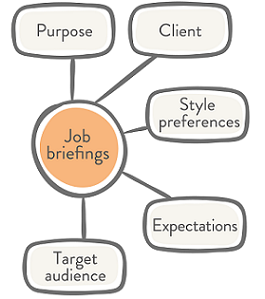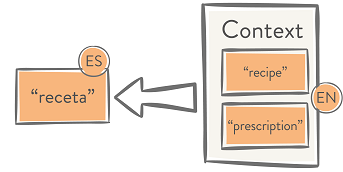Nobody would deny that context has a salient relevance in translation endeavors, and on a broader scope, in understanding language in use. But on second thought, “context” is a more complex notion that refers to different levels of texts and reality. Is context only what surrounds a word or an expression? How to take into account the social practices where texts are used? Is it always possible to consider all aspects of context? In this article, we will outline some possible answers to these questions and think about their relevance for localization projects.
Managing Context
When examining context, we have to imagine it in a general sense. It doesn’t only refer to contextual placement of words or texts, but also to the people that participate in a given communication act, the setting where it happens, how, when, and why. So when it comes to localization projects, collecting this context data has a positive impact on the analysis and selection of the best workflows, procedures, services or strategies of a task or project.

Job briefings are the documents that support this need for situational context. They include a summary of who the client is, which texts will be processed and their purpose, what’s the target audience, expectations, etc. Sometimes, job briefings also incorporate the style guide or any other linguistic preference.
But how does all this information add value to a localization or translation project? For instance, knowing who the client is—e.g., a direct client or an LSP—informs Project Managers (PM) about possible expectations or the level of familiarity with the industrial processes. So, for example, to a client who is a newcomer, a PM can suggest extra quality assurance steps to reduce risks for sensitive documents. On another note, having information about where the localized texts will appear—say a mobile app v. desktop app, or a marketing campaign for social media v. graphic media campaign—can help PMs choose the right linguistic team for the task, with experience not only in IT or Marketing but in mobile apps or social media.
Context Reliance

We know context is crucial because it sometimes draws the line between inaccurate and precise translations. A visual reference, a note, a video, all can help linguists determine the gender of a character, the meaning of a sentence, the reference of a noun, etc. This is why every project, no matter its topic or intention, can benefit from having references (e.g., videos, websites of the product or the client, related documents) or the source text (the original document). These materials help linguists maintain consistency, choose terminology, check format or typography, and so on.

Other dimensions of context play a role in translating humor, for example. In this case, culture, age and idiosyncrasy of the target audience is crucial to translate puns and jokes in a way that is funny but also appropriate. The same can be said, for instance, about the reliance of subtitles on audiovisual materials, like in movies, series or video games. Being able to see and listen to gestures, movements, and tones of voice help translators and editors contextualizing dialogues and narratives.
Teamwork and Communication
As we can see, there are a lot of resources that can address the need of contextualizing texts, projects and clients. However, a realistic approach to localization endeavors needs to take into account that contexts, as complex as they are, are never completely saturable. This means that sometimes, despite supportive documents or briefs, meanings, wordplays, and references can be difficult to capture. It’s in these scenarios where a solid communication approach based on exchange and teamwork can boost creativity and problem-solving. Research, discussion, debate, and having a comfortable framework for asking questions to teammates and clients always help find collectively the best option for each case.









